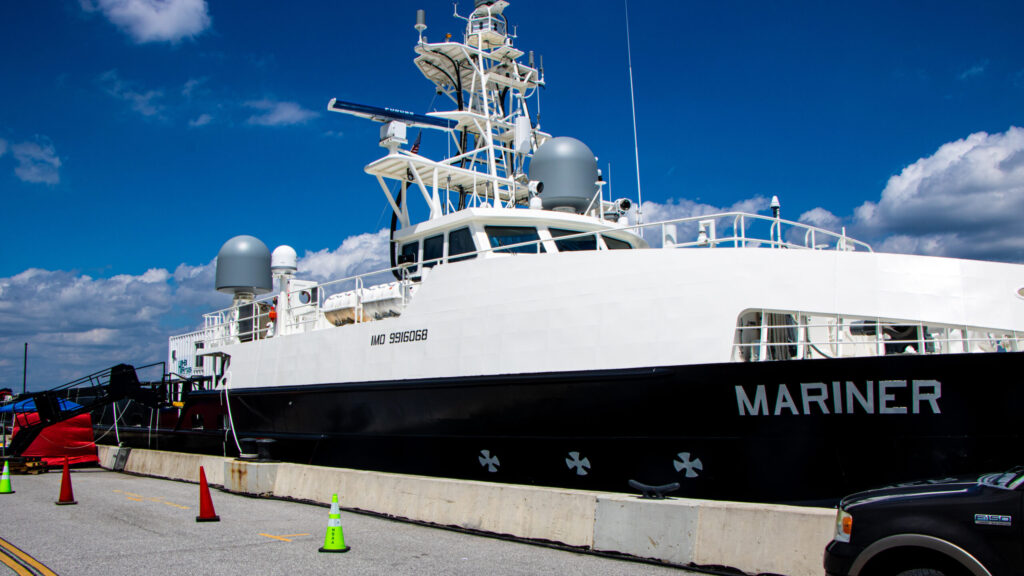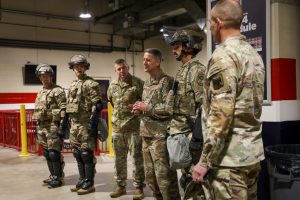
The USV Mariner sits docked at the United States Naval Academy. (Justin Katz/Breaking Defense)
SURFACE NAVY 2025 — A senior Navy officer overseeing the service’s investments into unmanned surface vehicles says he’s “skeptical” of fielding the Large Unmanned Surface Vessel.
“Instead of different large and medium designs, we need one craft that is affordable, non-exquisite, and can come off multiple production lines in an identical manner and go towards one of two payloads — either the envisioned magazine payload of the Large USV or the envisioned ISR-related Medium USV payloads,” Rear Adm. William Daly, the Navy’s surface warfare requirements director, told attendees this week at the Surface Navy Association’s annual symposium.
“We can build this craft in numbers at many shipyards. Designs already exist. We must not over-spec this,” he continued.
Daly’s job, which the Navy internally refers to as N96, is centered on directing the investments the service is making into its future surface warfare capabilities to include high-profile programs like the Medium and Large Unmanned Surface Vessels.
“The Large USV has a great purpose, but it has it has walked that path towards exquisite, expensive [and] unpalatable,” Daly told reporters on the sidelines of SNA. “I’m skeptical about that landing in the fleet.”
Daly said he would “pay attention” to a handful of USVs that originated from a Strategic Capabilities Office program dubbed Overlord. He emphasized those craft allow for multiple containerized payloads.
“So now I’m getting back to the threshold levels of what the previous Large USV was envisioned to carry. It’s a very appropriate, inexpensive, feasible, producible, elegant solution to two problems that can come at speed,” he said.
Daly’s remarks come just over a month after Breaking Defense exclusively reported on a letter sent to the service by two key senators that urged the Navy to back away from its original plans for LUSV.
In that letter, Sens. Jack Reed, D-R.I., and Roger Wicker, R-Miss., explicitly encouraged the Navy to direct funding away from LUSV and towards other unmanned programs that have shown greater promise like the MUSV.
Elsewhere during this year’s symposium, Adm. Daryl Caudle, US Fleet Forces commander, told reporters he believes the Navy has become very capable at using individual unmanned capabilities for missions such as intelligence gathering and submarine rescue operations. How to take those capabilities and use them in a broader conflict, though, remains a struggle.
“What you really are asking me about is how I bring that and package it together to enable a navy to win against a peer competitor,” he said Wednesday. “That’s what’s new, and that’s where we’re just in the nascent stages of thinking about how to do that.”
As a fleet commander, officers such as Caudle have a direct impact on the investment decisions Daly and his counterparts for aerial and subsurface unmanned technologies will make moving forward. While speaking to reporters, Daly acknowledged this and foreshadowed that his predictions about LUSV may or may not come to fruition.
“Until one of these doors that I’m pushing on shuts or slows me down, that’s where I’m going,” Daly said. But “I’m just a two-star on the [chief of naval operations’] staff. There are fleet commanders … they put out [the] signal, and I’m responding to demand signal. So, I can certainly be overrun.”





